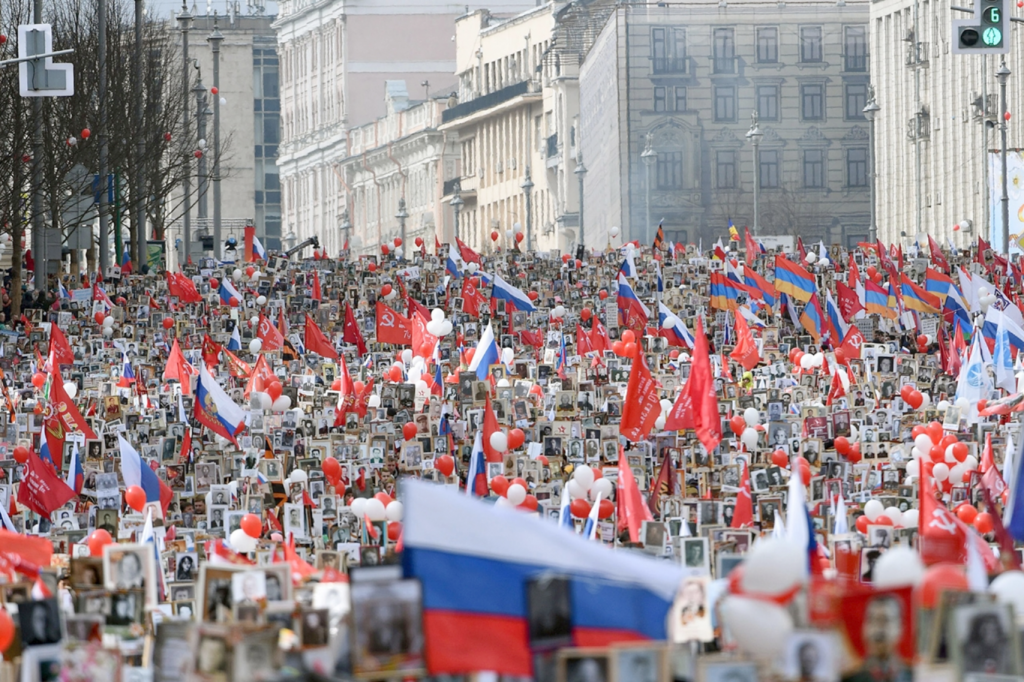By Slava Tsukerman
On May 9, Russia celebrated the 72nd anniversary of Nazi Germany’s defeat in the WWII, which Russians call the Great Patriotic War. The annual military parade took place on Moscow’s Red Square.
After the parade Muscovites joined so called “Immortal Regiment march”, a tradition that started in Russia a decade ago. People flooded Tverskaya Street, one of Moscow’s main arteries, and marched towards Red Square holding placards and photos of their family members, the war veterans, to pay tribute to their heroic deeds during the Great Patriotic War. More than 800,000 people participated this year in the Moscow march, which has become an absolute record for the event. According to Russian sources, hundreds of thousands of people have participated in the similar marches all over the world.
It was difficult not to notice that with years passed the WWII victory celebration acquires more and more militaristic character.
Among the participants of the march many were wearing Russian military uniforms of the time of the WWII. There were many uniformed children. The uniforms production became a flourishing business. Here is some of Internet advertising:
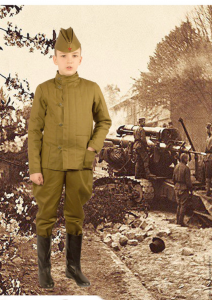
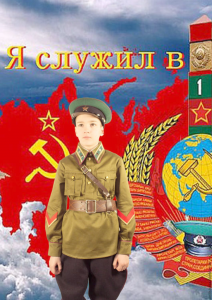
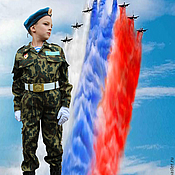

Below is the text of the advertising from one of such Internet shops:
“It’s the eve of Victory Day, and the memory of the soldiers who fought in those years has lived and will live! We really want to raise in the current boys the feeling of MOTHERLAND, patriotism, to preserve the memory of the history of the Great Patriotic War.
“On this occasion, the WWII models of the uniform of the 1943 were recreated for boys who want to proudly flaunt the festive streets on May 9, and for veterans who want to quietly drop tears of pride for the fact that such a wonderful generation of boys, defenders of the Fatherland, has grown up.
Also the boys are happy to wear this uniform both in everyday life and on ‘men’s’ holidays, such as the Russian Army Day, February 23.
Make your children and veterans happy!”
Advertiser quoted some customers’’ comments, such as
“The uniform is superb! I gave it as a present to my son, I cannot get him to take it off!”
A lot of stickers appeared these days on cars in the streets saying: “We can repeat it!”
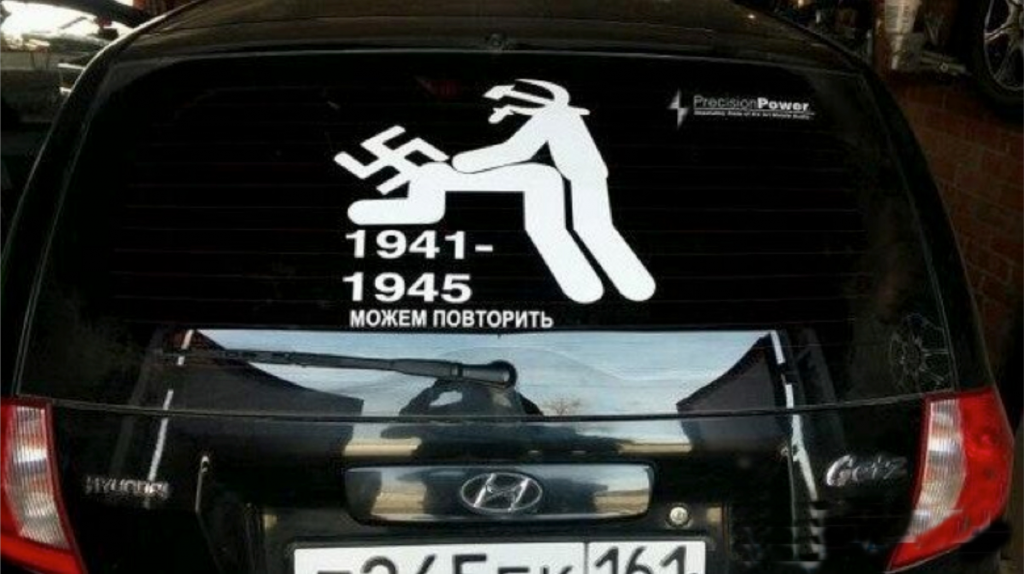
Serious commentators are in shock. What is it the people who use these stickers want to repeat?
New estimates of the Russian losses in the WWII were published this month. The history of the estimations is long and controvercial.
Right after the war, Stalin, proceeding from considerations known only to him, personally determined the losses of the USSR to be seven million people: slightly less than the official figure of the losses of Germany. Khrushchev published a new figure: 20 million. Gorbachev published a book prepared by the Ministry of Defense. The authors of the book, claiming that finally “the classification of secrecy was lifted” gave the figure: 27 million.
The new research, made after the fall of Communism, using the declassified data of the State Planning Committee of the USSR, now finally published, gave absolutely different figures.
The total decrease in the population of the USSR in 1941-1945 was more than 52,812,000 people. Of these, the irrevocable losses of the population of the USSR as a result of the millitary action amounted to almost 42 million people. The figure includes 19 million servicemen and about 23 million civilians. Among civilians there were 5,760,000 children under the age of four.
It reports 250, 000 Russians had been wounded. 775,000 had come home with broken skulls, 155,000 had returned with one eye blind, 54,000 with both eyes blind, 501,400 had come home with their faces deformed, 157,565 had their necks broken, 444,046 had deep intestinal injuries, 143,241 had broken spines, 630,259 had wounds below waist line, 28,648 had their genitals ripped off, 3,000,147 Russians had come home without one hand, 1,000,300 without both hands, 3,000,255 without one leg, 1,000,121 without both, and 85,942 had lost their both legs and both hands.
In 1949, a year of celebration of Stalin’s 70th Birthday, Moscow was completely cleansed of these hundred thousands of invalids, who had no close relatives to take care of them. They were sent to the Russian north to special centers, mostly located behind the tall walls of the ancient monasteries, to die far away from the eyes of healthy Russians.
Hundreds of thousands of healthy soldiers who were captured by Germans and spent some time in the German prisoners of war camps, after their “liberation” were send to the Soviet concentration camps or killed by soviet authorities.
Do Russians really want to repeat that?

